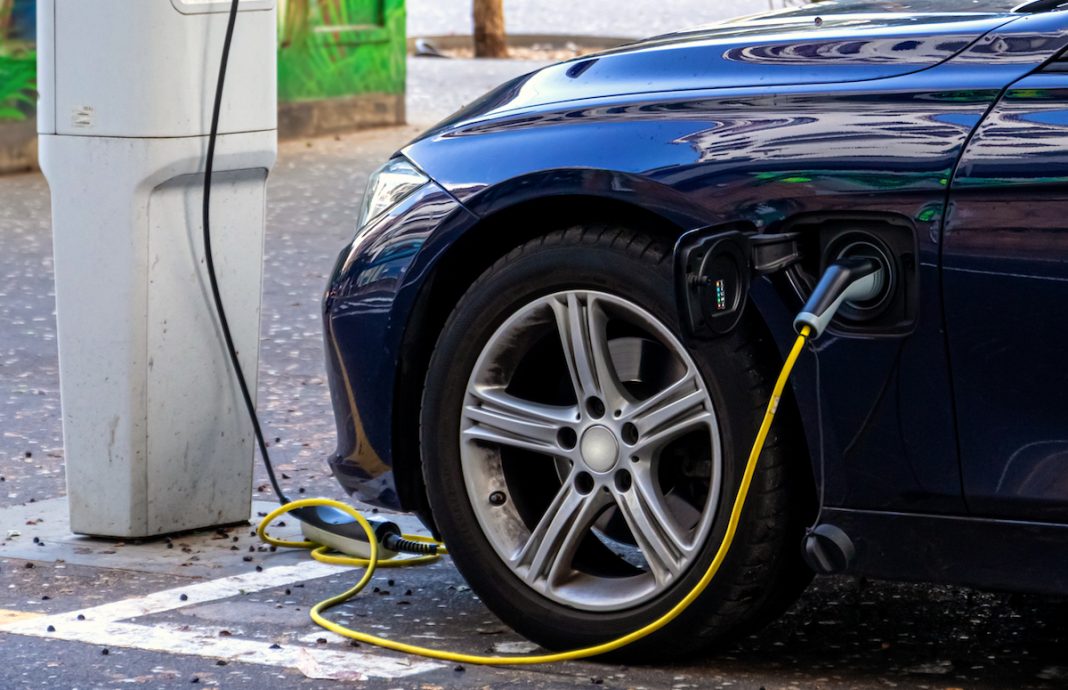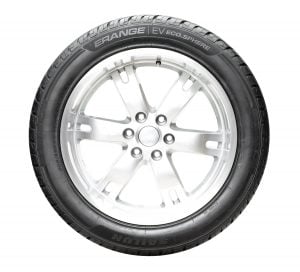Electric vehicles are rapidly crossing over into the mainstream auto market in the US and Canada, with major manufacturers like Toyota, Ford, Volkswagen and GM all readying new EVs to take the fight to existing players like Tesla, Nissan and Hyundai-Kia. Everything from family SUVs to hard-working pickup trucks will soon be available in all-electric form.
In some respects, EV owners will find it simpler to maintain their new vehicles. Electric powertrains are mechanically less complex than internal combustion engines (ICEs) and many of the fluids involved are fill-for-life – say goodbye to regular oil changes! But tires will still wear out and they arguably play a more important part in getting the most from your vehicle when there’s no longer an ICE on board.
As such, there are some important points to consider when shopping for replacement rubber, whether the tires are all-seasons or for winter use.
Maximize your range
Consider rolling resistance
Let’s start with how far you expect to drive on a single battery charge. Rolling resistance is a measure of the energy required to keep a tire rolling. The less energy that is lost in the deformation of the tire as it rolls along the road surface, the lower the rolling resistance. In an EV, lower rolling resistance translates to more battery energy remaining available to drive the car further, increasing its range.
“A tire rubber compound with a measurable rolling resistance improvement – and therefore battery range improvement – is very important.”
Ron Dolan, executive vice president for sales and marketing at Sailun Tire Americas
“In the past, rolling resistance did not catch on as a major selling point for regular tires, because there are so many gas stations available,” says Ron Dolan, executive vice president for sales and marketing at Sailun Tire Americas. “Even if a tire got you 3-4% better fuel mileage, it didn’t drive consumer behavior. But we’ve found from our research that for electric vehicles, because we’re still in a stage where there’s a shortage of recharging infrastructure, range anxiety is one of the biggest concerns for owners. A tire rubber compound with a measurable rolling resistance improvement – and therefore battery range improvement – is very important.”
Formulating a tire compound is often a trade-off between the conflicting performance requirements of rolling resistance, wear resistance and wet grip. Tire companies are innovating to stretch all three points of this so-called ‘magic triangle’, without compromising performance in any one area.
“You’re asking a tire to take care of a lot of different attributes,” says Dolan. “In the past, low rolling resistance generally affected wear or traction, but with these more advanced vehicles, you don’t have that option anymore. Everybody in the industry is striving to make a tire that will perform under these new conditions. It is an exciting time because we all have to rise to these new challenges. At Sailun we believe that we will be a leader in this space.”
Torque and weight
Consider heavy batteries and all that instant torque
The large battery packs that deliver high EV range considerably increase the weight of all-electric cars, trucks or SUVs versus their gas or diesel-powered cousins. A Hyundai Kona electric, for example, is about 300kg (21%) heavier than the FWD, 2-litre gas-powered Kona equivalent. That in turn places additional load demands on the tires, especially considering the high levels of torque that are instantly available from an electric motor.

These demands are leading to new tires being developed with load ratings applicable to EV use. One way to reduce rolling resistance is to reduce the weight of the tire, but an EV’s need for a strengthened tire casing will instead place even greater importance on advancements in the tread compound.
According to Dolan, the load demands from EVs could lead to tire manufacturers revising their tire treadwear guarantees, which will be harder to achieve than with a combustion engine vehicle.
“We believe that some of the mileage warranties that brands put on their tires will have to be reconfigured due to the high torque, or new compounds will be needed to maintain a 60,000-mile/100,000km treadwear rating, for example.”
Don’t forget the basics
Tire rotation is key
One way to maximize the life of any set of tires, especially on 2WD vehicles, is to rotate them to attain even wear. On EVs, the high loads make this more important than ever.
“I own a Hyundai Kona electric, which is a front-wheel-drive vehicle, so I make sure to rotate the tires every 10,000km,” says Dolan. “Tires should be rotated at least every 10,000km, or at any sign of uneven wear, because the high torque can create wear issues.
Maintain the correct tire air pressure
“It’s very easy to forget about tires, but they are our only connection to the road. To get the best out of them, we also need to maintain the correct air pressure. Not only does that reduce the risk of failure from heat build-up, but it maximizes your fuel mileage, or in the case of an EV, battery range.”
“To get the best out of them, we also need to maintain the correct (tire) air pressure. Not only does that reduce the risk of failure from heat build-up, but it maximizes your fuel mileage, or in the case of an EV, battery range.”
Keeping tires properly inflated also helps to reduce tire-road noise, which may be particularly noticeably in a vehicle without the noise of a combustion engine. For this reason, the new generation of EV-ready tires also targets a quiet ride.
Buying tires for an electric vehicle: what to consider
Choosing the correct tires will help you make the most of your new EV. It’s important to do your homework before making a purchase to ensure that the tires are up to the job.
“There’s so much information online,” offers Dolan. “My suggestion for any consumer would be to take out the bias of a particular shop that you’re buying from and do your own research upfront. There are many factors to consider. The most well-known brands make amazing products, but they can be quite costly; don’t assume that the most expensive tire is the best.
“Find out what other people who have used the products on EVs, are saying. In this early adoption phase of EVs, there are owners who love to talk about their cars so you can also reach out to online user groups and forums to educate yourself or get crowdsourcing information. Once you’ve done your own research, you should also take your local tire shop’s opinion into account, because they are the experts.”
Sailun’s own answer to the EV market, the ERange EV tire line, will launch fully in early-2022. “We’re very excited to be coming out with these new tires,” Dolan enthuses. “Our new EcoPoint3 rubber mixing technology, which was invented within the Sailun group, plays very well to all the attributes needed for an EV tire. We believe that we will create one of the best-value products in the marketplace.” Learn more about Sailun’s EV-specific tire here.



